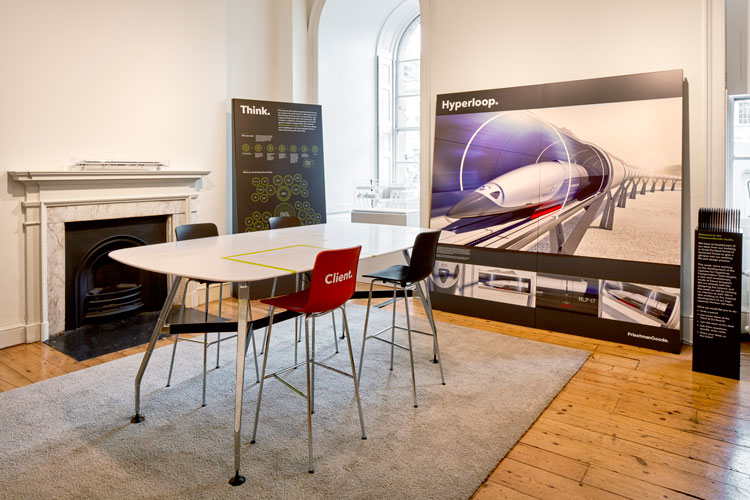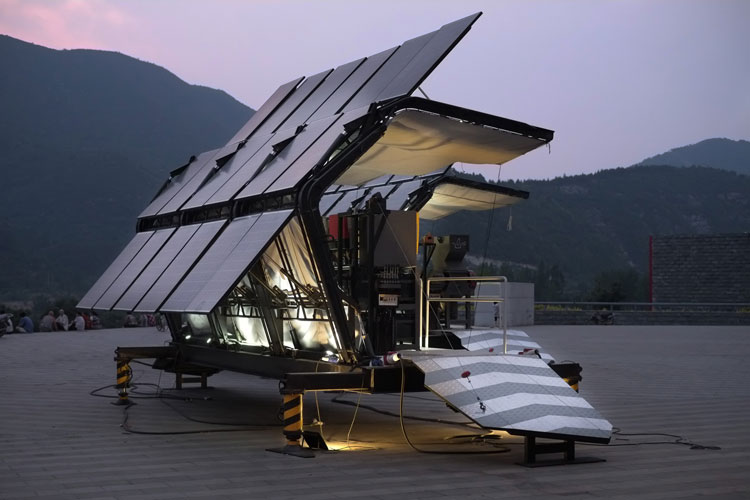Design Frontiers at Somerset House: our top picks
The London Design Festival 2017 exhibition taking place this week contains 30 diverse projects exploring the designer’s role in everything from protecting the environment to creating straight-up beautiful work.
Giant, plastic-recycling machines, strange fabric sculptures and furniture made from fungus – these are just some of the fascinating things visitors will see at Somerset House in September.
The gallery is alive with installations, design studio workshops and product launches this week, as the first ever Design Frontiers exhibition opens for London Design Festival 2017.
Design Frontiers is showcasing the work of 30 international designers, with individual rooms in the gallery’s West Wing and Terrace Rooms dedicated to each piece.

The show replaces the London Design Biennale, which was held at Somerset House last year and enlisted designers from 30 different countries to create pavilions that represented their nations and culture. It will return to the spot in 2018.
While Design Frontiers is less culturally diverse, the exhibition covers a wide range of disciplines from fashion and textiles to product, automotive and digital, making it an apt, miniature representation of the eclectic London Design Festival itself.
Jonathan Reekie, director at Somerset House Trust, says the gallery’s “mission” is to “become a place where contemporary culture is imagined, made and presented” – the show successfully realises these three things through demonstrating designers in the process of creation through to finished product.

One highlight is Please Don’t Feed the Designers; a room offering insight into the workings of product and automotive design studio PriestmanGoode. The consultancy’s designers will work from Somerset House for the week, with several of their transport design concepts on show.
This includes the studio’s Horizon train carriage interior concepts, which visitors can try out through a physical replica and also through a virtual reality headset, enabling them to walk around a train carriage and change seating materials and styles.
It also includes a first look at carriage capsules for high-speed transport system Hyperloop, which PriestmanGoode have been commissioned to design. This concept is a work in progress, and will be developed with visitor participation throughout the exhibition.
“Much of what we do is confidential, and they’re often major, infrastructural projects that we work on for a very long time,” says Kirsty Dias, director at PriestmanGoode. “So this is a chance to show people our design process.”

Another stand-out installation is Pentagram partner Domenic Lippa’s monochrome installation 250 Facts and Figures – simply a room filled with hundreds of stacked copies of his same-named book, with black-and-white posters on the walls displaying random facts. The room is a peaceful, graphics-based interlude from the rest of the festival, which is so product-focused. Lippa’s book is free for visitors to take, and as books disappear this creates an interesting, disturbed set of structures in the room, which are sure to change with every day of the festival.
While it’s not extraordinary to see installations still being constructed on opening days of exhibitions, it’s not often you see furniture growing before your eyes. One installation, Mycelium + Timber from Sebastian Cox and Ninela Ivanova, is a fascinating exploration of how furniture can be “grown” naturally from mixing wood and fungus.
The process works by shredding and combining non-commercial woods, with mycelium, fungus that grows on trees, in a shaped mould. Furniture then “grows” into certain shapes, with different woods used to get varying colours and finishes.

It aims to be a more sustainable way of making furniture, as it uses woods that are normally destroyed or disposed of when woodlands are felled, and also requires less machine power or human labour than traditional methods.
Ivanova adds that, unlike mould, tree fungus does not give off spores, so is not harmful to people’s health, and the furniture produced is water repellent and fire retardant.
“There is a hype around growing objects because the only human labour that is involved is setting it up, then nature takes its course,” says Ivanova. “Also, the woods we’re using have had no commercial value up until now. We want to use this method to create pieces that beautiful too, so people want to have them in their homes.”

The theme of sustainability is seen a lot throughout Design Frontiers. The fountains of Somerset House’s courtyard have been temporarily halted and replaced with foreboding installation Trashpresso. The huge, recycling machine sits next to giant spheres filled with plastic waste. It has been designed by new furniture brand Pentatonic, which was launched earlier this month and creates furniture out of rubbish such as old smartphones, plastic bottles and food waste.
The installation asks visitors to drop their own plastic rubbish off, and see it transformed through the solar-powered machine into tiles that can be used in manufacturing and building, making the process of recycling transparent and engaging.

Other exhibits at Design Frontiers include the launch of Benjamin Hubert’s smartphone accessory brand Nolii, insight into the workings of Jaguar’s design studio, and an installation exposing London’s air pollution through beautiful data visualisation and a soundscape.
Design Frontiers offers visitors a curated selection of work across disciplines in digestible, room-sized parts without being over-whelming. According to LDF director Ben Evans, “The appetite for design is ever-increasing in London.” Fittingly then, while this exhibition is aimed at the design community, the themes of sustainability, practicality and transparency are universal ones which will attract and intrigue the general public too.
Design Frontiers takes places 18-24 September at Terrace Rooms and West Wing Galleries, Somerset House, Strand, London WC2R 1LA. Entry is free. For more information, head to Somerset House’s site.
-
Post a comment





